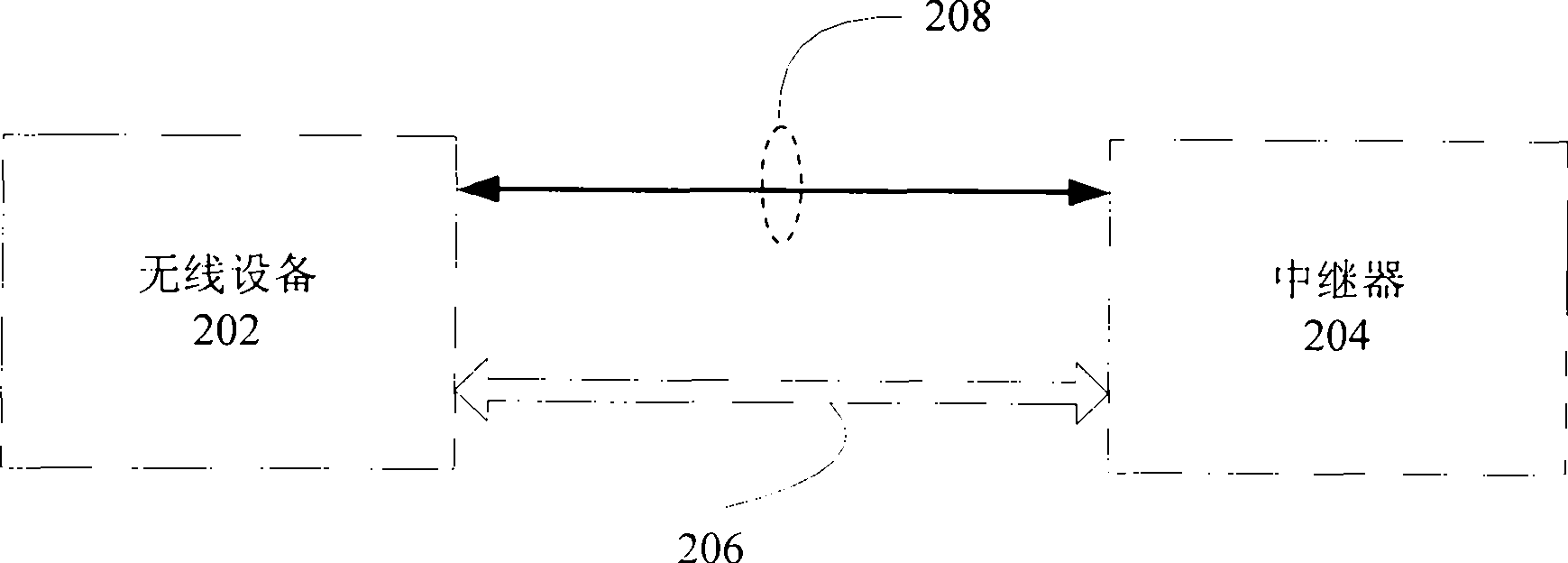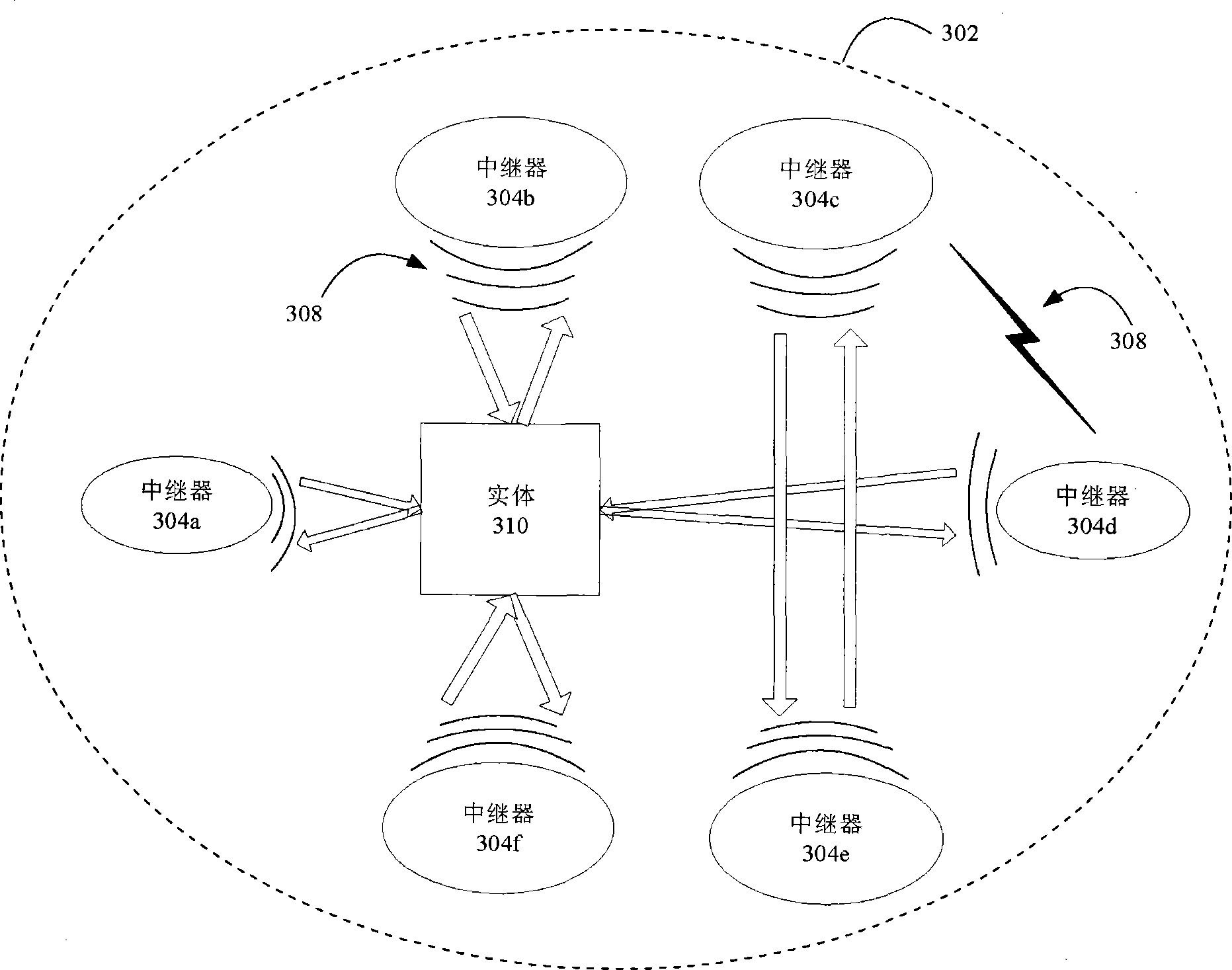Method for utilizing ehf repeaters for detecting and/or tracking an entity
A very high frequency, repeater technology, applied in the field of wireless communication, can solve the problems of different propagation characteristics, signal attenuation and so on
- Summary
- Abstract
- Description
- Claims
- Application Information
AI Technical Summary
Problems solved by technology
Method used
Image
Examples
Embodiment Construction
[0037] Some embodiments of the present invention relate to methods and systems for detecting and / or tracking entities using extremely high frequency repeaters and / or transceivers. The multiple repeaters use an extremely high frequency (EHF) interface to detect and / or track entities located in the area of the multiple repeaters. Each repeater will transmit an EHF signal to realize the identification of the transmitter repeater. The identification of the transmitter repeater includes the use of unique information and / or transmission parameters. Each repeater determines the characteristics of the received EHF signal to determine the existence and / or location of entities located in the area of the plurality of repeaters. The above characteristics include: the identity of the transmitter repeater, signal power, signal amplitude, signal delay, and / or reception angle. In addition, non-EHF connections may be used between the multiple repeaters to coordinate and / or update the dete...
PUM
 Login to View More
Login to View More Abstract
Description
Claims
Application Information
 Login to View More
Login to View More - R&D
- Intellectual Property
- Life Sciences
- Materials
- Tech Scout
- Unparalleled Data Quality
- Higher Quality Content
- 60% Fewer Hallucinations
Browse by: Latest US Patents, China's latest patents, Technical Efficacy Thesaurus, Application Domain, Technology Topic, Popular Technical Reports.
© 2025 PatSnap. All rights reserved.Legal|Privacy policy|Modern Slavery Act Transparency Statement|Sitemap|About US| Contact US: help@patsnap.com



